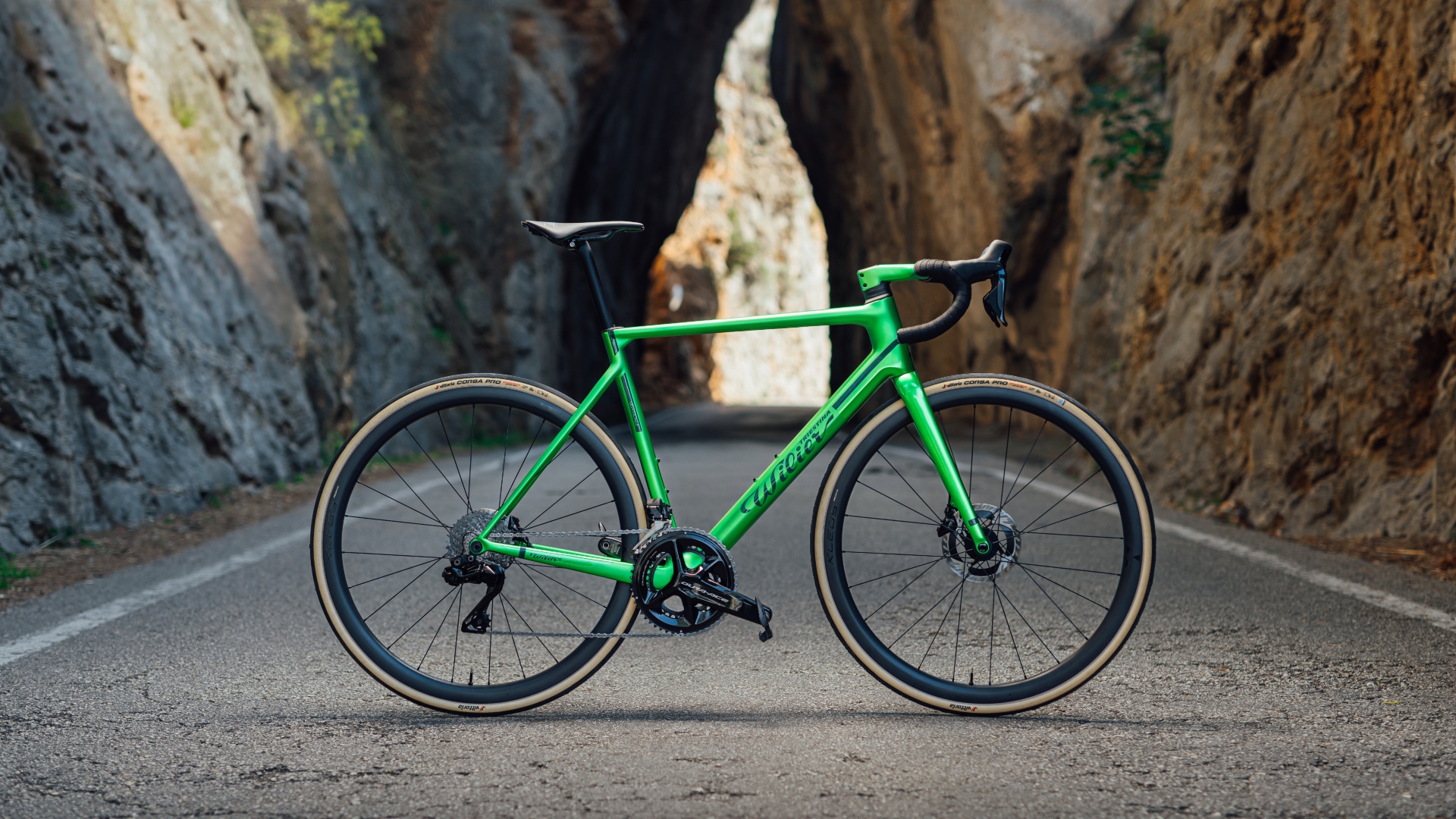
Today, Wilier announced the release of the all-new Verticale SLR race bike, engineered primarily for climbing, and boasting a notably light 658-gram frame weight.
Traditionalists may appreciate Wilier's commitment to its 118-year history, delivering a race bike that emphasizes low weight and ride quality over aerodynamic advancements. The Verticale SLR maintains a classic and refined design, appealing to those who value traditional aesthetics.
First seen in action at the Critérium du Dauphiné, the Verticale SLR is expected to be the weapon of choice for the challenging climbing stages in this year's Tour de France for riders like Lenny Martinez and the Groupama-FDJ team.
But does this modern classic stand up against the technological marvels from the likes of Specialized and Giant? Let's take a look.
Frame set weight reduction
The new Verticale SLR is most closely related to Wilier's outgoing 0 SLR race bike, sharing a similar silhouette with its predecessor. Instead of opting for a drastic external redesign, Wilier has focused on subtle yet significant refinements to the frame's build-up from the inside out.
These updates include a new carbon fiber layup, which has resulted in a frameset that is nearly 10% lighter than the Wilier 0 SLR. It's a case of careful evolution rather than radical changes, but Wilier has certainly made the Verticale competitive with top-tier climbing bikes from other brands.
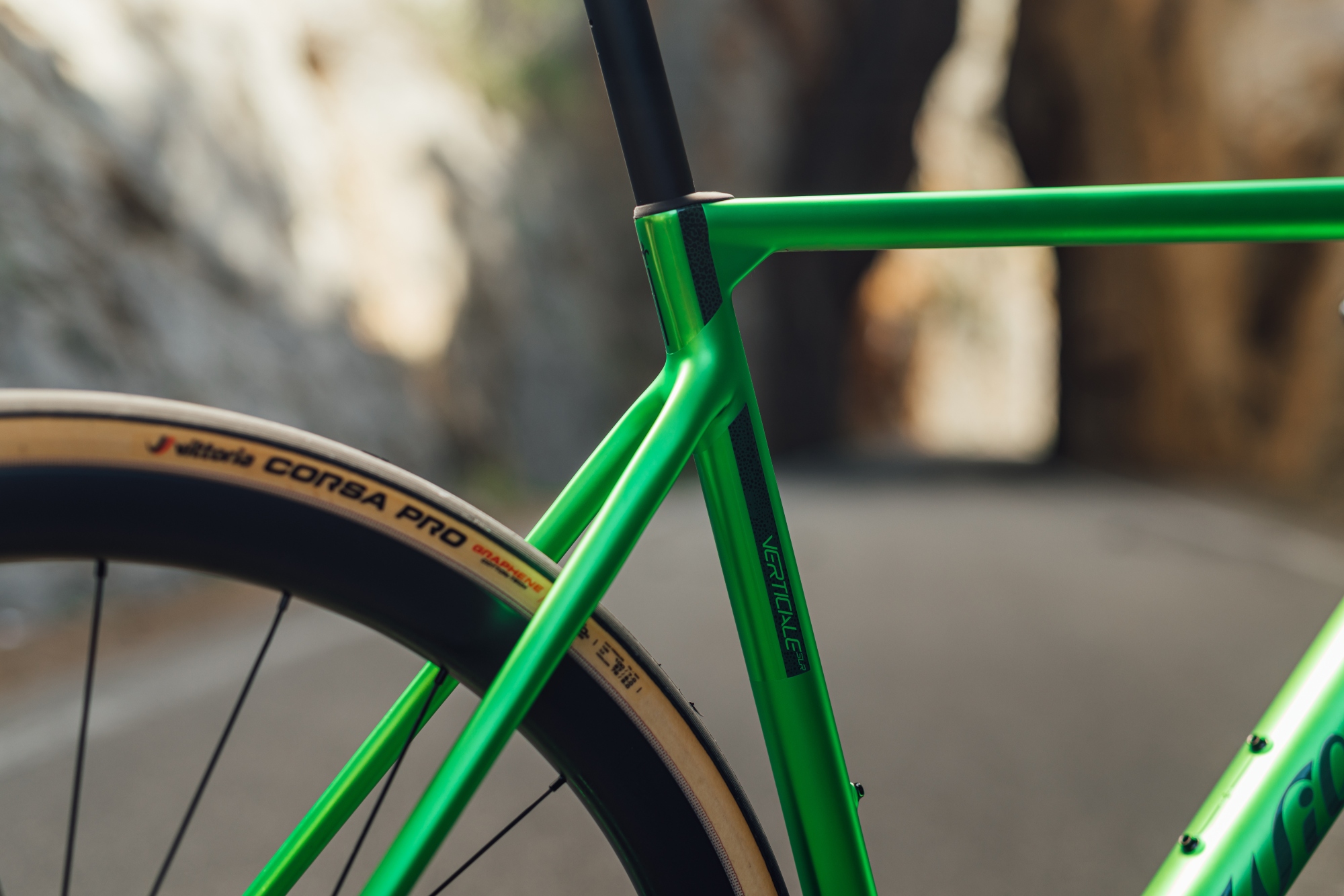
The first area Wilier sought to drop weight from was the seat post clamp area. The new mechanism now fastens diagonally down from the rear of the bike, making adjustment easier and allowing for a small weight saving in the hardware.
Wilier has also shaved 10 grams off of the seatpost, which is available with both 0 and 15mm of saddle setback, and includes an integrated number mount to keep system weight as low as possible for professional riders.
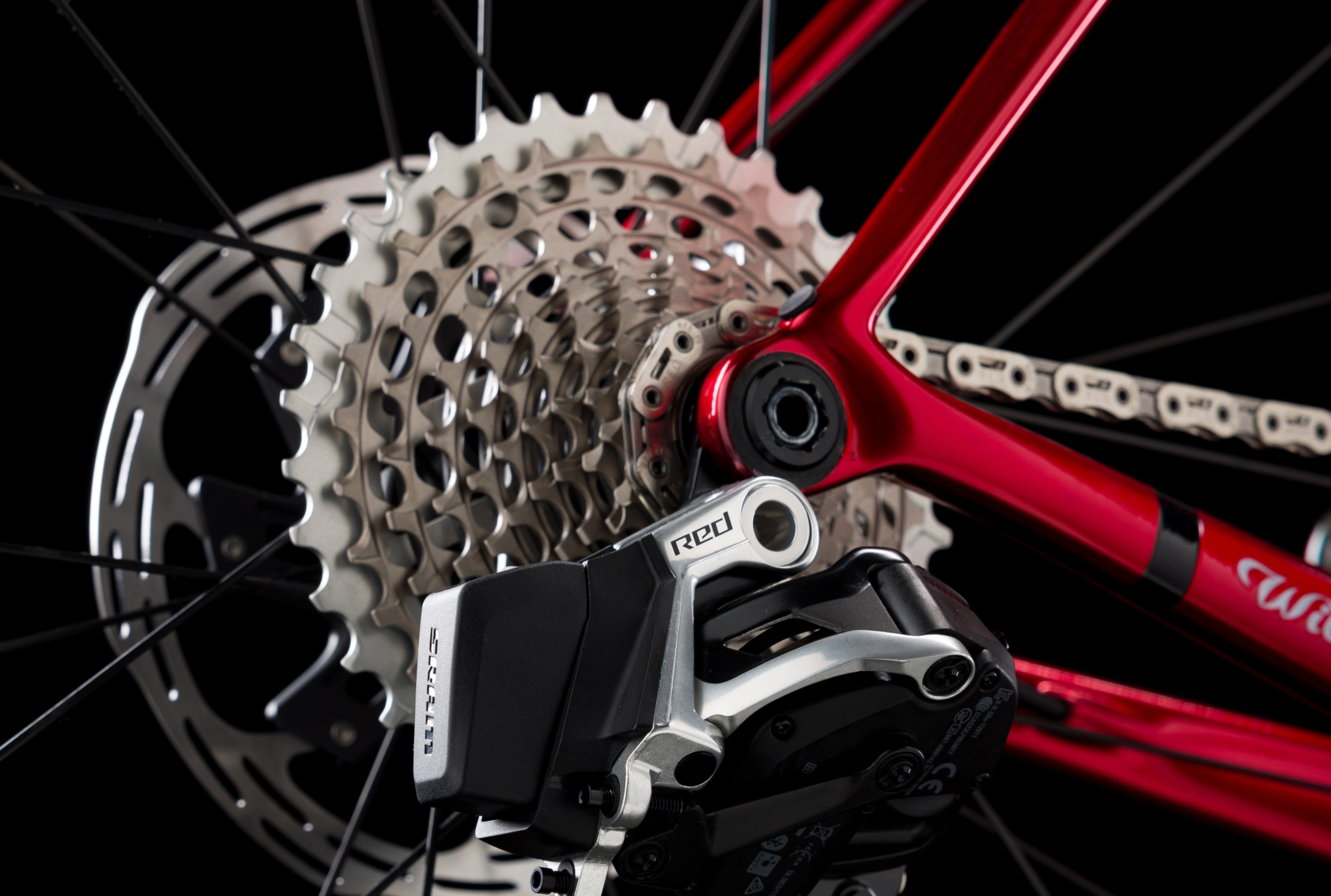
Move further towards the rear of the bike, and weight-saving measures become far more noticeable to the naked eye. Wilier has redesigned the rear derailleur hanger so it is no longer integral to the frame. This has enabled a small weight saving, alongside wider chainset compatability, giving more opportunities for rear derailleur mounting options.
Then there's the rear dropouts - slender is an understatement. Those of you who have watched bike design evolve over the last decade or so may remember that when Cervelo first introduced super skinny seat stays on the R5 back in 2008, questions were asked about the strength of the frameset - clearly in the modern age of advanced materials science, looks can be deceiving.
The new dropouts, as well as being incredibly slight, have been reshaped, which Wilier says improves reliability by creating more space between the chain and the dropouts, good news for any wheel changes that Groupama FDJ might have to endure at this year's Tour.
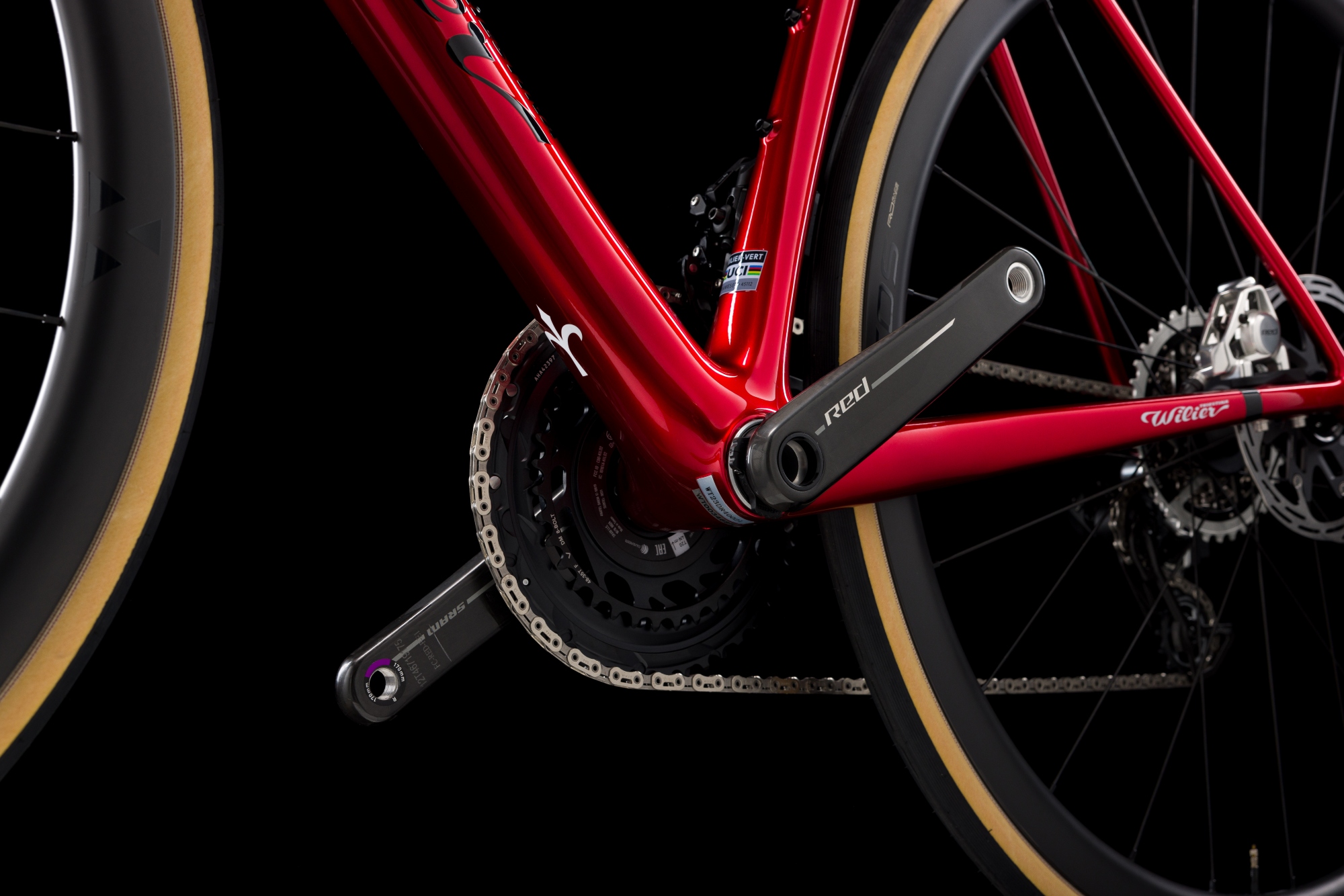
New race geometry
Wilier has opted to tweak frame geometry on the new Verticale so that it's even more focused on climbing, which has resulted in a fractionally more upright position. However, reach has been reduced slightly on XS and S sizes, and increased a touch on XL and XXL-sized frames compared to the brand's 'classic geometries'. Medium and L have required no real changes, and it's worth mentioning that stack height is consistent across sizes.

Thus far, the new geometry seems to be a hit with the Groupama FDJ riders too, with David Gaudu saying the Verticale will be his "trusted companion" throughout the 2024 Tour de France.
New integrated cockpit
Wilier has also redesigned its integrated handlebar and stem to make the Verticale more comfortable in what the brand calls C0 and C1 positions, as well as decreasing the overall system weight.
The new bar is a carbon monocoque design said to weigh around 310 grams, making it competitive with the likes of the Roval Rapide Aero cockpit - though there are no verified aero claims yet for the new design.
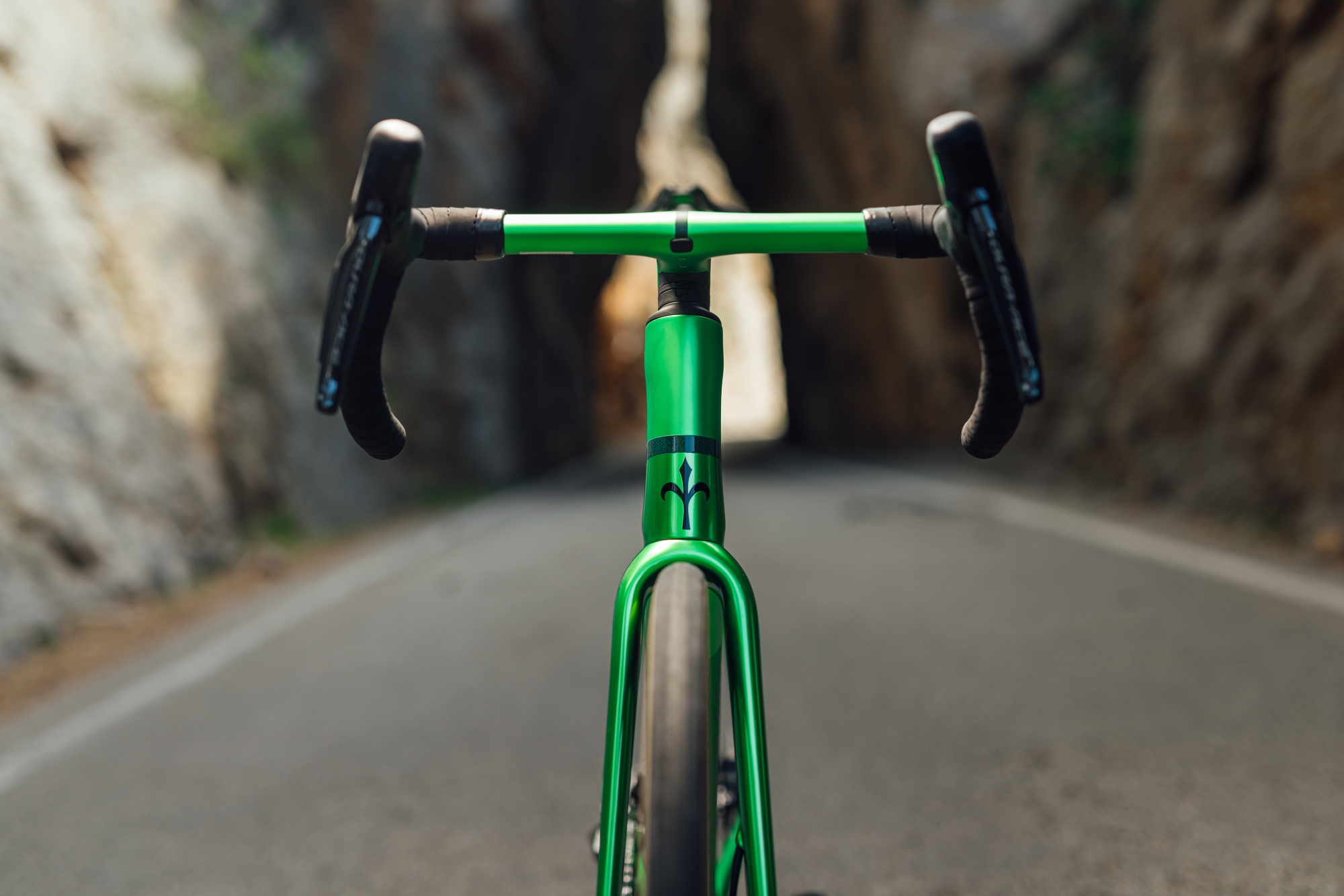
Predictably, Wilier has focused on flattening the handlebar when the bike is in a climbing position. This flatter handlebar tilt angle should improve comfort on steeper gradients, creating a more natural riding position.
Aerodynamics has been considered in the revised shape of the handlebar drops. Wilier, like many other brands over the last couple of years, has introduced 30mm of flare from the hoods to the bottom of the drops.
Handlebars are available in either a 370mm (center to center at the hoods) or 390mm setup, with a clear focus on race geometry.
Pricing and availability
As you might expect, Wilier's new Italian super bike comes with a price tag to match. Just seven models of the new bike are being released, all of which are built up with second-tier or higher groupsets.
The range starts with an Ultegra Di2 build, with Wilier subsidiary Miche Kleos 36mm wheels which will set you back $12,100/£9,000. SRAM Force AXS builds are available with the same wheels, in both power meter and non-power meter versions.
Top spec models come specced with Miche's range-topping Kleos RD 36mm climbing wheels, and will cost $15,300/£12,500 for a Dura-Ace Di2, and SRAM Red AXS builds.
Wilier is also releasing a Campagnolo Super Record Wireless build, which will hit shelves with a steep $15,700 price tag, however UK pricing and availability are yet to be confirmed.
For more information, visit the Wilier website.







